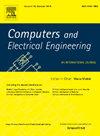Data-driven recursive multivariable modeling, operation, and control of active distribution networks with distributed generation
IF 4
3区 计算机科学
Q1 COMPUTER SCIENCE, HARDWARE & ARCHITECTURE
引用次数: 0
Abstract
This paper addresses the challenges arising from the increasing integration of distributed generation into active distribution networks (ADNs), focusing on their modeling, operation, and control. Data-driven recursive multivariable modeling, capable of capturing both static and dynamic interactions in real time, has emerged as a promising solution. By utilizing the extensive data generated by modern grid infrastructure, this approach enhances network model accuracy and improves operational efficiency and control strategies. This paper strengthens the connection between Process Systems Engineering (PSE) and power systems, traditionally underexplored in this domain. By integrating PSE principles, particularly data-driven and control allocation methodologies, into the modeling, operation, and control of ADNs, this work optimizes power system performance. Three Recursive Partial Least Squares (RPLS) methodologies—sample-wise, block-wise, and moving-window—are rigorously compared regarding estimation/prediction characteristics and convergence speed. This novel analysis challenges the assumption of instantaneous model adaptation, emphasizing the importance of carefully considering convergence periods for effective monitoring, control, and optimization. The paper proposes and analyzes three control structures integrated into an RPLS-based supervisory strategy for voltage regulation at ADN nodes: (1) decentralized control, (2) control allocation with measurement combination, and (3) optimization-based centralized control. Different integration formats are evaluated based on the controller technology used: (a) simple setpoint updates, (b) full ADN model adaptation to recalculate controller matrices, and (c) full model adaptation for updating the optimization formulation. Simulation results were obtained using the IEEE 33-bus test system. The results reveal a trade-off between the complexity and performance benefits of each control strategy. Although no strategy proves definitively superior, the latter two show more promising overall prospects.
求助全文
约1分钟内获得全文
求助全文
来源期刊

Computers & Electrical Engineering
工程技术-工程:电子与电气
CiteScore
9.20
自引率
7.00%
发文量
661
审稿时长
47 days
期刊介绍:
The impact of computers has nowhere been more revolutionary than in electrical engineering. The design, analysis, and operation of electrical and electronic systems are now dominated by computers, a transformation that has been motivated by the natural ease of interface between computers and electrical systems, and the promise of spectacular improvements in speed and efficiency.
Published since 1973, Computers & Electrical Engineering provides rapid publication of topical research into the integration of computer technology and computational techniques with electrical and electronic systems. The journal publishes papers featuring novel implementations of computers and computational techniques in areas like signal and image processing, high-performance computing, parallel processing, and communications. Special attention will be paid to papers describing innovative architectures, algorithms, and software tools.
 求助内容:
求助内容: 应助结果提醒方式:
应助结果提醒方式:


